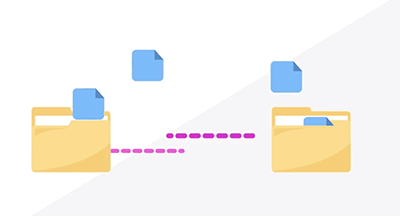
I once planted a sprouted onion (like the one you forget in the basket and it starts to grow). Then after a couple of days, I dug it up to gauge its progress, much to my partner’s amusement.
The onion did not grow successfully. I don’t even have to wonder if it might have had I let it alone to grow for a while, unbothered—I didn’t, so it didn’t.
How many times do well-intentioned leaders interrupt the growth of staff and students to measure progress? How many professional development or schoolwide growth initiatives are derailed or even extended by subtle attempts to hurry them along? As the current year wraps up, leaders have one eye on the finish line and the other on the horizon, determining which way to grow next. A shift in perspective can help.
Measuring progress is important
Before a gardener begins a new crop, the soil must be prepared to accept and nourish a seed (or sprouted onion, whatever you’d like).The baseline starting point represents some of the most important data in the stack. Without a place to measure from, we cannot measure growth.
Typically that starting point is identified and noted before initiatives or interventions take off, so there will be little to no interruption of the actual work to measure a benchmark so close to the starting point. At this stage, measuring anything would be premature and throw off not only work but subsequent growth trajectory.
Measuring progress is a milestone
And those don’t happen every day.Milestones are special because they are rare. They represent tons of preparation and work. Think of graduation ceremonies: super special, yet somehow already overdone (looking at you, random-elementary-grades graduation).
Measuring the progress of an initiative is similar to creating a milestone for the sake of it. It sucks the magic of a special milestone away and instead leaves a black hole of achievement.
So how do we measure growth in a way that neither adds unnecessary disruption nor results in loss of momentum?
Measuring progress isn’t the priority—growth is.
Throw off the pressure to follow the trend that prioritizes measurement over growth.As you shift away from relying on frequent measurement, focus on quick checks, building up scaffolding, and boosting mentorship opportunities. It’s still important to measure those benchmarks, just not at the detriment of the time and focus sustainable growth demands. One solution may incorporate outsourcing analytics and growth projections to other expert providers (compatible with a solid SIS of course). Powerful dashboards help make sense of growth data in between assessment periods by displaying and analyzing trends. You'll be able to check in on how your district's initiative is progressing without doing anything to interrupt the flow. It’s another way to make your data work for you, instead of the other way around.
Growth data isn’t limited to numbers, although usually it can be distilled into numbers. For example, surveys about achievements, perspectives, and feedback can be aggregated to learn from it. Those more open-ended methods of checking in to see how growth is progressing may even give a better picture of each individual’s experience. Coaching meetings, pulse check questions, demonstrations, and intelligence reports all give leaders a peek at what staff is accomplishing.
The wait is worth it. Time and patience spent are an investment that pays back.
WHAT'S NEXT FOR YOUR EDTECH? The right combo of tools & support retains staff and serves students better. We'd love to help. Visit skyward.com/get-started to learn more.

|
Erin Werra Blogger, Researcher, and Edvocate |
Erin Werra is a content writer and strategist at Skyward’s Advancing K12 blog. Her writing about K12 edtech, data, security, social-emotional learning, and leadership has appeared in THE Journal, District Administration, eSchool News, and more. She enjoys puzzling over details to make K12 edtech info accessible for all. Outside of edtech, she’s waxing poetic about motherhood, personality traits, and self-growth.




